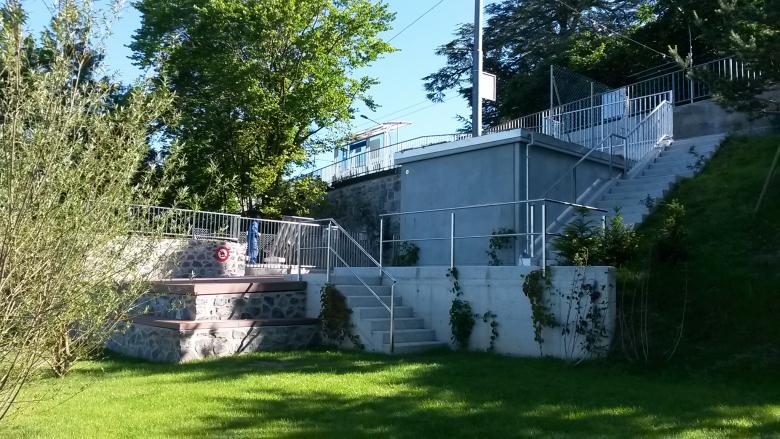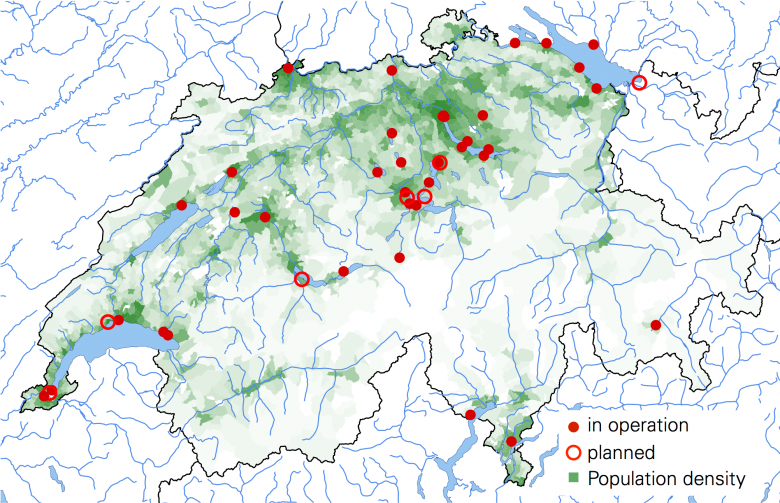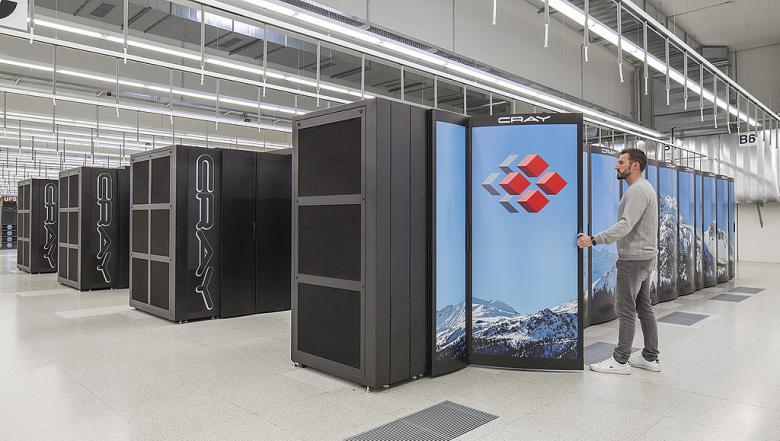Combating climate change with Swiss lakes
Switzerland’s lake surface waters contain vast amounts of thermal energy, collected from the sun and stored as heat. This can be extracted and used for heating. At the same time lake water can be used as a coolant.
Switzerland has 35 lake-water heating and cooling facilities spread across the country which are used to avoid burning climate changing fossil fuels. One in western Switzerland heats homes. Another, across the Alps in Switzerland’s Italian-speaking region, cools Europe’s largest super computer and generates clean electricity at the same time.
Using the lake to heat 3,000 homes
The largest heat pump of its kind in Switzerland was switched on in 2015. Located in the small French-speaking town of La Tour-de-Peilz on the shore of Lake Geneva, the facility has enough capacity to heat up to 3,000 homes. Finding the facility is not easy, because like an iceberg, most of the system is under the surface. And it's why the story begins 70 metres under the ground.

At this level you can see where the water enters from the lake, before being pushed up a level through fat pipes to a rack of heat exchangers. From there the resulting warm water rises a further level from where it is pushed out under the road on its way to local homes where individual building-based heat pumps work the final magic, creating hot water for heating and showering.
From lake to home heat in three steps
The system is made up of three elements. The first, continually takes water from the lake using a heat exchanger to extract around 3 degrees of heat from it before discharging the resulting cold water back into the lake. The second is a closed system, which sends the warmed water around in a loop through pipes to the buildings. The final part is the heat pumps, which are installed in all of the connected buildings. These heat pumps extract and compress heat from the (warm) water before returning it, cold, to the lakeside facility, ready to be heated again via the heat exchangers.

Cutting CO2 emissions throughout Switzerland
The water, taken from 70 metres below the surface, is constantly around 6 degrees. The heat exchangers take 3 degrees of heat from it and send it back in lake Geneva. The pumps, filters and heat exchangers are electric. The system effectively magnifies energy. Every watt of electricity used to power the pumps and heat exchangers produces 3 to 4 watts of heat energy.
At full capacity, pumping 3,600 cubic metres of water an hour, the facility is capable of producing 35 million kilowatt hours of energy every year, the amount of energy consumed annually by around 3,000 homes. At this rate the installation could reduce CO2 equivalent emissions by 10,000 tones every year.

Using a lake to cool a supercomputer
On the other side of Switzerland, located in the commune of Lugano in the Italian-speaking canton of Ticino, sits Europe’s most powerful computer, the 19.6 petaflop Piz Daint supercomputer. Servers like those making up the Piz Daint supercomputer power the internet. Run by the Swiss National Supercomputing Centre (CSCS), the monster computer is used by Switzerland’s weather service for climate modelling, the Swiss Institute of Particle Physics, the Human Brain Project and numerous others.

To prevent computational bits of computers to melt, Piz Daint is cooled by an electric system, but also with up to 760 litres of water per second pumped from nearby Lake Lugano. Using cool water from the lake significantly reduces the facility’s overall electricity consumption. The water, taken 45 metres below the lake’s surface is around 6 degrees. This water is pumped 2.8 kilometres to CSCS, which sits 30 metres higher than the lake.

Squeezing out the energy with micro turbines
The cold lake water, which is between 8 and 9 degrees by the time it reaches the computer facility, is pumped through heat exchangers to cool the giant computer. From there the water is sent to a stilling basin, a reservoir designed to remove turbulence from the water, before being sent back to the lake. The overall design of the facility includes two micro turbines between the lake and the stilling basin, which sits 30 metres above the lake. As the water flows downhill towards the lake these micro turbines generate electricity. The electricity generated by the turbines is used by the pumps and amounts to around one third of their energy consumption.
For ecological reasons, the water returning to the lake must never be over 25 degrees. Some species of fish, like trout, are sensitive to water temperature.





